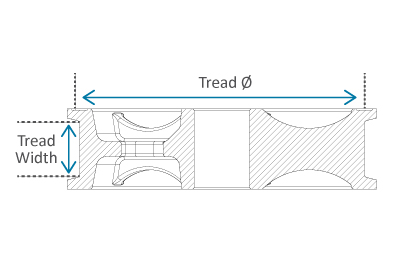An overview of terminology used to describe industrial wheels
This glossary provides a list of wheel-related terms focusing on the function and design of single and double flanged wheels. It can be used as a quick reference guide when reading Reliance Foundry blogs or product pages.
Reliance Foundry offers a range of industrial cart wheels for forestry, manufacturing, offshore loading, and various other commercial and industrial sites. All wheels are manufactured with a standard machine finish with customized wheels also available for specific applications.
Wheel terms
Bearing
A machine element that reduces friction between moving parts within a restricted field of motion. Bearings can be installed into industrial wheels to ensure free turning on a fixed axle.
Bore diameter
The interior diameter of the hole that fits around an axle.
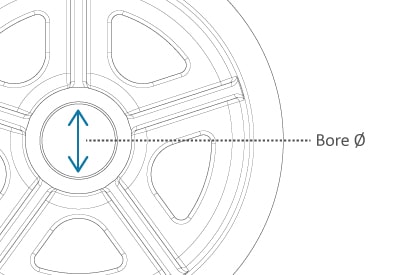
Boring
The process of enlarging a previously drilled or cast wheel bore. Boring can be used to achieve a more accurate diameter or to create tapered bores.
Bushing
A metal or nylon lining set into a wheel’s bore to limit the size of an opening, resist abrasion, or serve as a guide. A bushing can prevent friction and erosion between a wheel and axle.
Double flanged wheel
A wheel with two flanges—one on either side of its tread. Particularly useful when operating conditions are not as controlled, and when safety is of special concern. Learn more about the benefits of double flanged wheels.
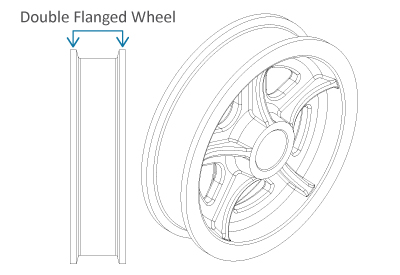
Drive wheels
Wheels fixed to an axle, often with a keyed fitting. Keyed wheels are typically used to transfer torque from a powertrain to provide a final driving force. Learn more about drive wheels.
Flange
An external ridge around the edge of a wheel used to keep the wheels on a track. Wheels are available with a single or double flanged configuration.
Flange diameter/overall (OA) diameter
The overall diameter of the wheel, including the flange.
Flange width/overall (OA) width
The overall width of the wheel, including the flange
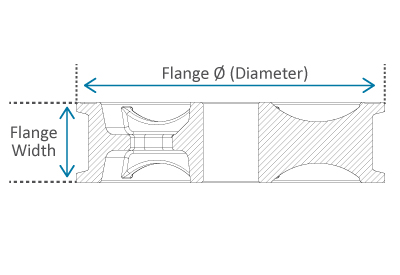
Grade (of steel)
Classification of the composition and physical properties used to determine suitability of a material for specific applications. Grade determines values such as strength and toughness, as well as the ability of a material to resist corrosion.
High carbon steel
Steel with a carbon content between approximately 0.30–1.70 percent. Higher carbon content produces harder steel suitable for heat treatment since it has a lower melting point. Higher carbon content can improve wear resistance but decreases the ductility (a material’s ability to deform under tensile stress without fracturing).
Hardenability
The depth up to which a material is hardened after heat treatment.
Hardness
The measure of how resistant a metal is to deformation under stress. However, once a material becomes more resistant to deformation—it also becomes more brittle—making it more susceptible to fracture.
Hub
The central part of a wheel connecting the axle to the wheel itself.
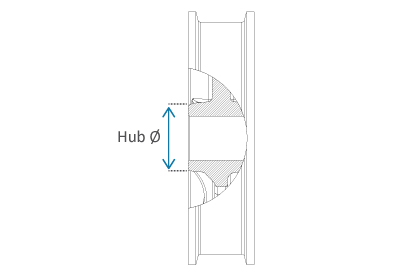
Idler wheels
Idler wheels are independent of their axle—they are not fixed. A bearing or bushing sits inside a central hole in the wheel allowing it to rotate around the axle. Learn more about idler wheels.
Length through bore
The measurement from one edge of the bore to the other.
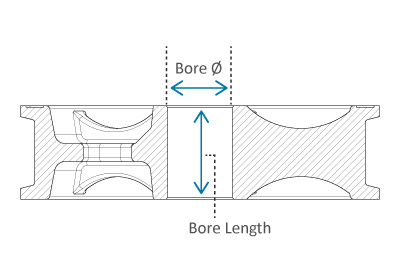
Safe working load (load rating/capacity)
The maximum amount of weight a wheel can bear. To determine the required load capacity for a wheel within a vehicle assembly:
- Identify the total weight of the vehicle and its maximum load.
- Add an additional 25 percent of the total weight to allow a margin of error.
- Divide the total weight, including the additional 25 percent, by the number of wheels supporting the cart. The resulting number must be lower than the safe working load of the wheel being used.
Note: Identifying load requirements in this manner will only determine capacity for a wheel at rest. Other factors such as the positioning of a load, travelling speed, environment, and track conditions can affect the safe working load for individual wheels. For specific operations, consult an engineer to determine the necessary requirements for any metal wheel application. Learn more about how to assess safe working loads.
Shaft size
The diameter of an axle to be fitted into the bore of a wheel.
Single flanged wheel
A wheel with a flange on one side of its tread. Commonly used for commercial and industrial vehicles with fixed axles running on trued rails. Learn more about single flanged wheels.
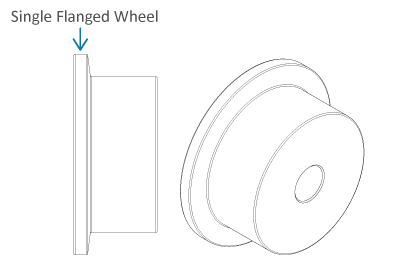
Track or rail size (or width)
The size or width of the track or rail for wheel operation.
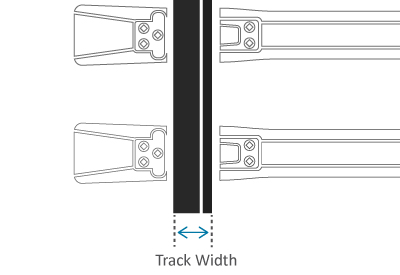
Tread
The running surface, or portion of a wheel, that meets the track or rail.
Tread diameter
The diameter of the running surface—not including the flanges, if any.
Tread width
The measure of a tread from one edge to the other—also referred to as the face of the wheel.
